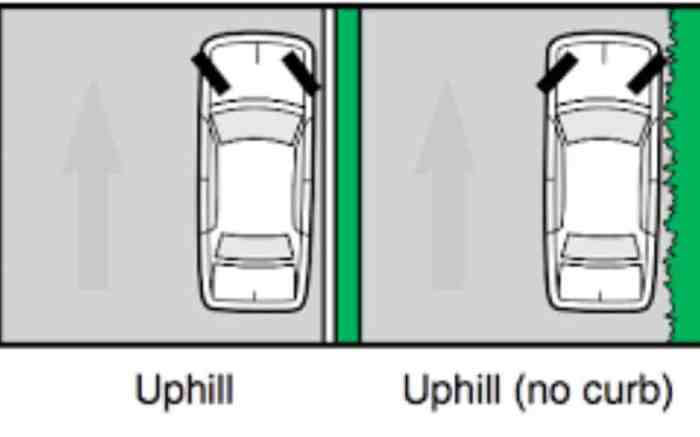Sus ruedas deben estar mirando hacia adelante a menos que…this phrase underscores the critical importance of proper wheel alignment for vehicle safety, performance, and compliance with regulations. When wheels face forward, they provide optimal stability, control, and maneuverability, reducing the risk of accidents and enhancing the overall driving experience.
This comprehensive guide delves into the mechanical considerations, steering and maneuverability benefits, design and engineering factors, regulations and standards, and exceptions to the rule of forward-facing wheels. By understanding these aspects, drivers can make informed decisions about wheel alignment, ensuring their vehicles operate safely and efficiently.
Safety Precautions

Ensuring that wheels are facing forward is crucial for safety as it prevents potential hazards and accidents. Wheels not facing forward can cause loss of control, stability issues, and increased risk of tire blowouts, leading to severe consequences.
Examples of accidents caused by wheels not facing forward include:
- A vehicle swerving off the road due to unstable steering caused by misaligned wheels.
- A tire blowout resulting in a loss of control and subsequent collision.
Mechanical Considerations
Having wheels facing forward offers significant mechanical benefits. It enhances stability and control by ensuring that the vehicle’s weight is evenly distributed across all four wheels. This improves traction, reduces the risk of rollovers, and provides a more predictable driving experience.
Forward-facing wheels also reduce wear and tear on tires and other components. When wheels are aligned correctly, they roll smoothly and evenly, minimizing friction and extending their lifespan.
Steering and Maneuverability

Forward-facing wheels are essential for precise steering and maneuverability. They allow for optimal control and responsiveness, enabling drivers to navigate curves and perform evasive maneuvers safely and effectively.
Wheel alignment plays a crucial role in vehicle handling. Proper alignment ensures that the wheels are parallel to each other and perpendicular to the road surface, maximizing grip and minimizing resistance.
Vehicle Design and Engineering: Sus Ruedas Deben Estar Mirando Hacia Adelante A Menos Que
The design of vehicles takes into account the importance of having wheels facing forward. It affects aerodynamics, weight distribution, and engineering challenges.
Forward-facing wheels streamline airflow, reducing drag and improving fuel efficiency. They also contribute to balanced weight distribution, ensuring optimal handling and stability.
Non-forward-facing wheel designs present engineering challenges, such as the need for complex suspension systems and specialized steering mechanisms to maintain stability and control.
Regulations and Standards
Regulations and standards mandate that wheels face forward to ensure safety and proper vehicle operation. These regulations are based on extensive research and testing, demonstrating the critical importance of wheel alignment.
Violating regulations regarding wheel alignment can result in penalties, vehicle impoundment, and increased insurance premiums. It also compromises safety and puts both the driver and others at risk.
Exceptions and Special Cases

There are exceptions to the rule of having wheels facing forward. Specialized vehicles, such as forklifts and construction equipment, may have wheels that are not forward-facing due to their specific design and functionality.
In these cases, safety considerations are paramount. Special measures are taken to ensure stability and control, such as counterweights, specialized steering systems, and operator training.
FAQ Insights
Why is it important to ensure wheels face forward?
Forward-facing wheels provide optimal stability, control, and maneuverability, reducing the risk of accidents and enhancing the overall driving experience.
What are the potential hazards of wheels not facing forward?
Wheels not facing forward can lead to reduced stability, impaired steering and maneuverability, increased tire wear, and potential accidents.
Are there any exceptions to the rule of forward-facing wheels?
Yes, certain specialized vehicles or applications may have wheels that do not face forward, such as forklifts or tractors, but these are designed with specific safety considerations in mind.